In this article, we’ll cover some definitions, free tools, and 13 SEO tips. You don’t need to be an SEO veteran to apply these tips. Nor do you need to be in the business of generating tons of content like Wikipedia to get people through your door. Ready? Here we go:
- What is SEO for nonprofits?
- Basic tools
- Keep website user friendly and in good SEO health
- Get listed in relevant directories and articles
- Look for unlinked mentions of your organization
- Answer journalists’ requests
- Do guest blogging to earn links
- Go after educational keywords
- Go after statistical keywords
- Invite experts to write for you
- Translate content to other languages
- Leverage local SEO
- Get a Google Knowledge Panel
- Optimize for branded search
- Don’t forget to interlink your content
Search engine optimization (SEO) for nonprofits and charities is the process of optimizing websites to increase visibility on search engine results pages (SERPs) when people look for information related to that organization’s cause, e.g., volunteering, fundraising, events, education, etc.
To implement the tips featured in this article, you’ll need a couple of free tools. But don’t hurry to get them now. You can do it later once you choose the tips that you want to use.
- Ahrefs Webmaster Tools – AWT is our free tool that allows you to improve your website’s SEO performance and get more traffic from search. AWT can show you information like all known keywords your site ranks for, show all backlinks, and perform technical audits automatically, among other things.
- A keyword research tool – Some free ones are Ahrefs’ free keyword generator, Keyword Surfer, or Google Keyword Planner.
- Google with search operators – In case you haven’t had the occasion to use those, search operators allow for customizing search results. For example, you can tell Google to only show mentions of your organization on a particular website.
Now that we know what tools to use, let’s look at 13 actionable tips that can boost traffic.
First things first. Let’s talk about your website’s technical fundamentals. They may need a little work. But if you don’t get them in order first, you risk undermining your SEO efforts in the long run.
I’m talking about things like issues with crawling and indexing, missing meta tags, slow loading times, and practices that result in bad user experiences (e.g., pop-ups). It happens to everyone, businesses and nonprofits alike.
So before you implement any other SEO tips, do these five things:
- Use Ahrefs Webmaster Tools to monitor your website’s SEO health – This tool will regularly monitor your website for over 100 SEO health issues. All you need to do is fix the issues that AWT brings to your attention.
- Get rid of pop-ups – Or at least most of your pop-ups. These include sign-up forms, exit forms, etc. Do the same for any banners that shift the layout.
- Make sure your website’s layout is clear, consistent, and usable
- Optimize your website for mobile devices – Over 50% of website traffic comes from mobile devices. On top of that, Google indexes and ranks content based on mobile versions of the websites (mobile-first indexing).
- Optimize your website for Core Web Vitals
For checking multiple webpages’ speed at scale, you can use Ahrefs Webmaster Tools too. Apart from showing metrics like Time to First Byte (TTFB), it also supports Core Web Vitals.

The numbers in blue next to the metrics will direct you to exact pages within a certain category. This way, you will know which pages need attention.
Recommended reading: The Beginner’s Guide to Technical SEO
Keywords related to nonprofits and charities can be extremely competitive.
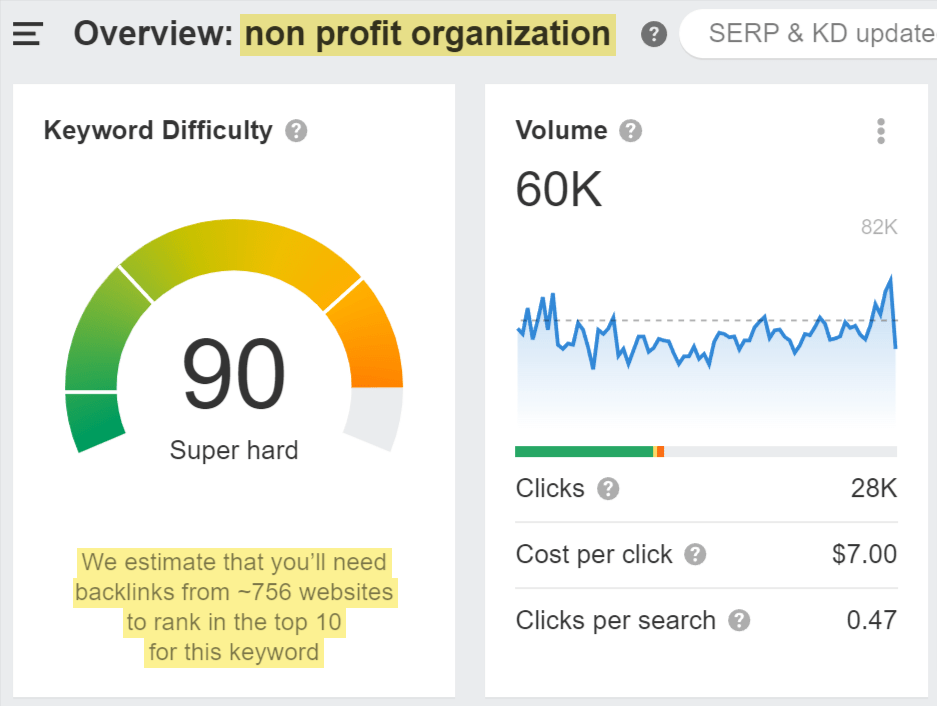
Data via Ahrefs’ Keywords Explorer.
In times like these, your best chance to be somehow included in that top 10 is to get listed on the pages that rank.
So if there’s a list of charities ranking in the top 10, that may be your best chance to get a piece of that search demand.
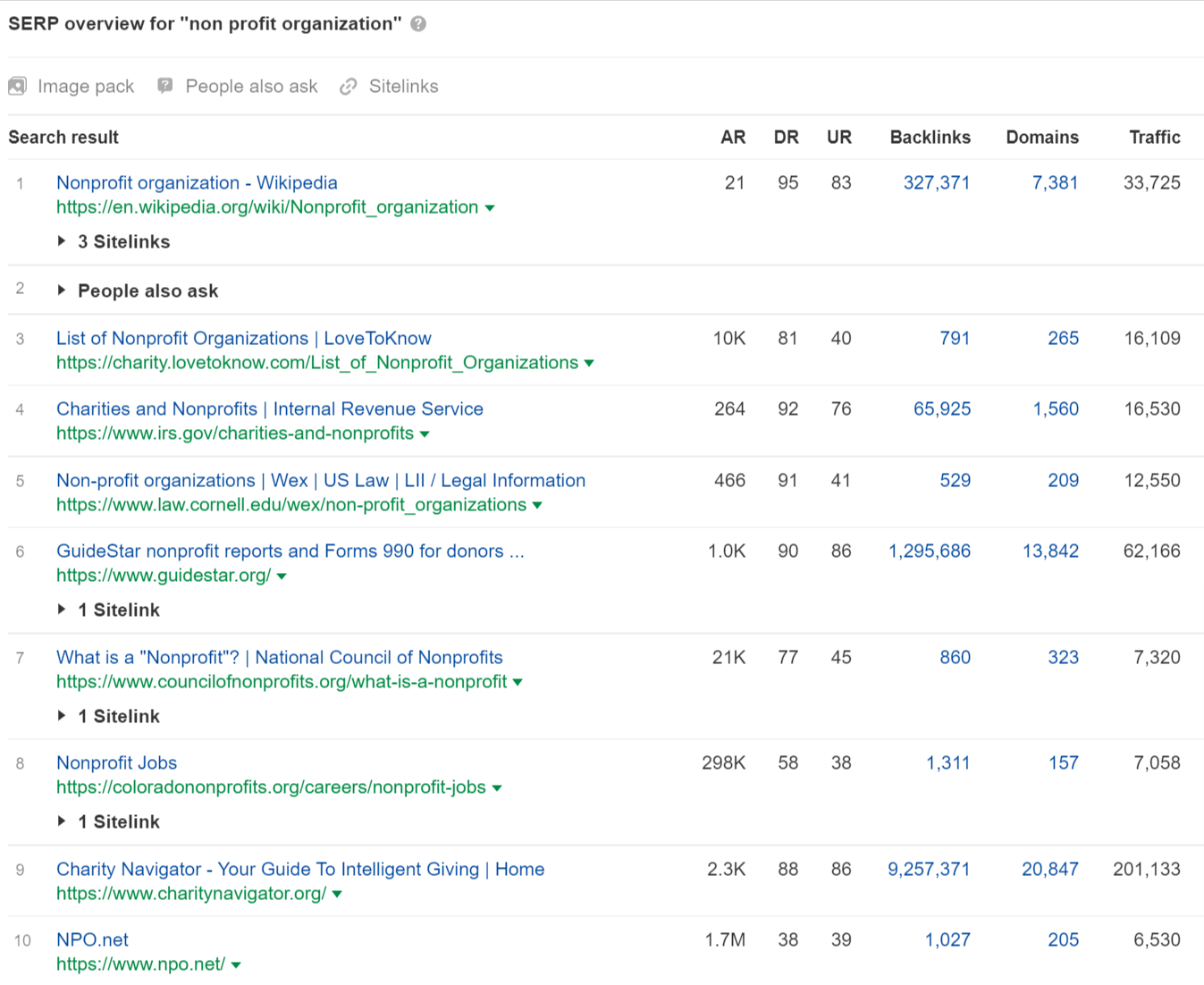
Notice any nonprofit organizations you know here? Exactly. Most of the search results for the query “non profit organization” are lists and directories of organizations. As shown above, they are super hard to outrank.
Moreover, that may be your best shot at credibility. In this case, if the search intent suggests that people are looking for a list of nonprofit organizations, a “nonpartisan” result is likely more credible.
But there’s more to that tactic. Yes, you will get visibility and traffic. But if the site that is going to feature you also links to your website, that will be a new backlink for you. And each additional site that chooses to do things similarly will, of course, give you another backlink.
Why do you need backlinks? Because backlinks are still one of the strongest ranking factors. Generally, the more backlinks a page gets, the higher it ranks and the more traffic it gets (study).
You will be able to see all links pointing to your site using Ahrefs Webmaster Tools.
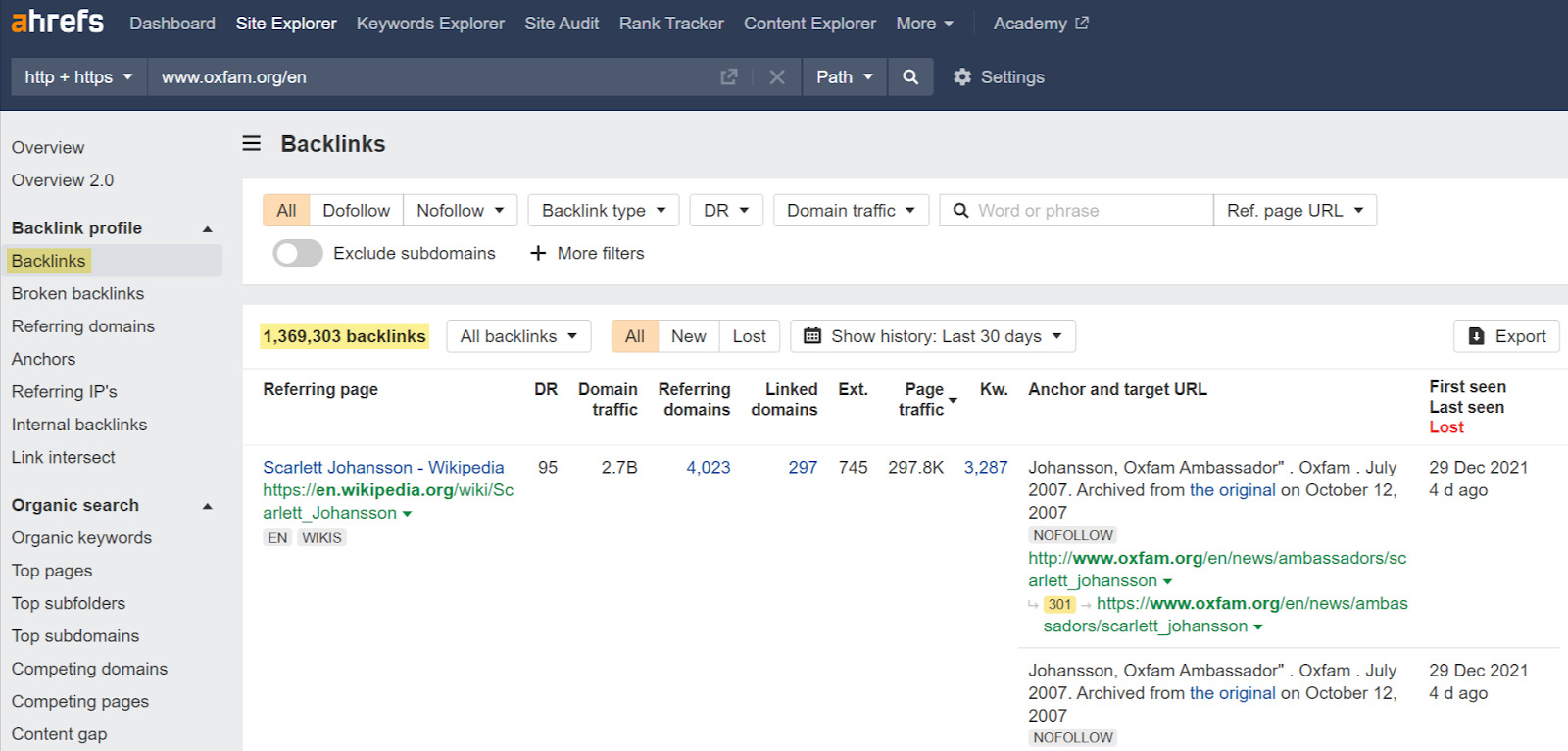
To see all backlinks to your website, open the Backlinks report in Ahrefs Webmaster Tools.
Nonprofits and charities commonly use PR. Hence, they get a lot of coverage from the media and partners. Interestingly enough, that tactic can bring SEO benefits too if the organization’s mentions are turned to links. Of course, that is not always the case:

You can find mentions of your organization using Google with the help of search operators. That’s exactly how I found the example above.
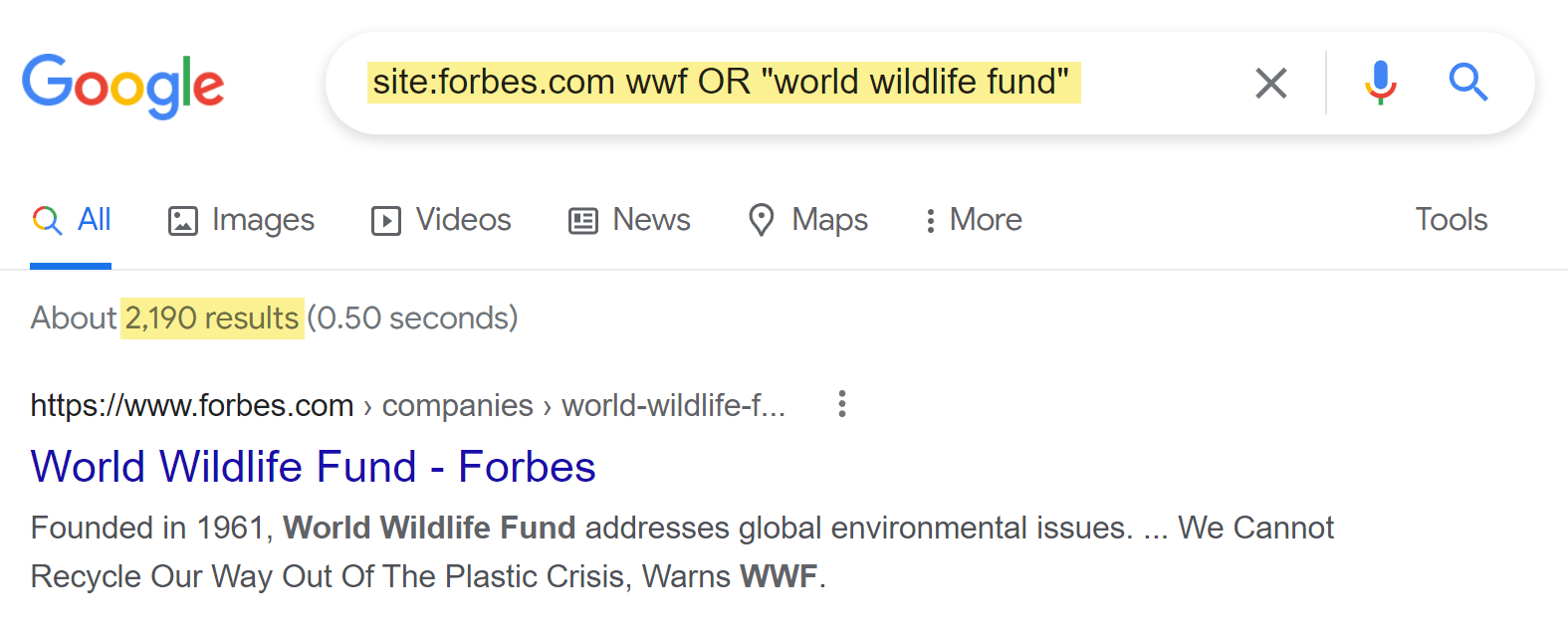
Of course, you can search the entire indexed internet for any mentions of your organization in any form.

The above query goes like this: wwf OR “world wildlife fund” -site:wwf.* -site:worldwildlife.* This basically means “show me pages that include ‘wwf’ or ‘world wildlife fund’ but exclude any site that starts with ‘wwf’ or ‘worldwildlife.’”
Finding mentions is the first step in the process. You still need to filter those results for unlinked mentions. We cover the entire process of finding unlinked mentions for any site in this tutorial.
Once you find your link opportunities, you need to reach out to the authors or site owners and simply ask them to link to you.
Naturally, the best way to get linked mentions is to ask for them upfront. A small “detail” like this can easily get overlooked in the heat of a PR campaign. Thus, it’s a good idea to include a mention of that in your standard operating procedures.
Media coverage is the lifeblood of nonprofit organizations. Naturally, it increases brand awareness and shapes PR. And if that coverage is online, it can also help improve rankings on search engines.
For this tip, I want to focus on a well-known SEO tactic: answering journalist requests on sites like HARO, ResponseSource, ProfNet, or SourceBottle. Additionally, you can scan Twitter for hashtags like #journorequest. Dot Star Media makes this easier with a free plan for charities.
#journorequest for a CNN report on the cost of living in the UK. I’m looking to speak to food banks, charities and community groups in London supporting people manage rising energy and food prices.
— Anna Cooban (@annacooban) February 7, 2022
The idea is simple:
- Sign up for one of the services mentioned above. Don’t forget to subscribe to the type of requests you want to get.
- Answer requests that relate to topics you are an expert on as soon as possible.
- If a journalist chooses your pitch, you’ll be quoted in their text and will most probably get a link to your organization.
Why is this tactic effective for SEO? Because links from the media will usually be some of the most authoritative backlinks you can build to your site.
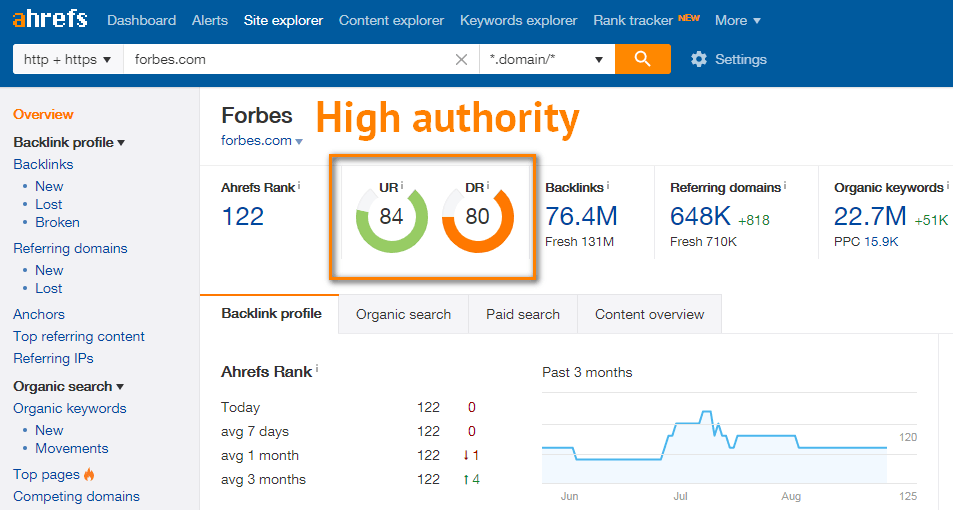
While services like HARO make the connection between journalists and sources easier, there is another side of that coin: Journalists get a lot of pitches. It can be quite hard to break through. To increase your chances of being picked by journos, we’ve got just the right guide: How to Build Backlinks and Get Press Using HARO [Case Study].
This tip is another way to build backlinks and get more visibility while you’re at it.
Guest blogging is about contributing guest articles on third-party websites (not only blogs). And it’s all over the internet. Here’s an example guest article from the American Nurses Association:
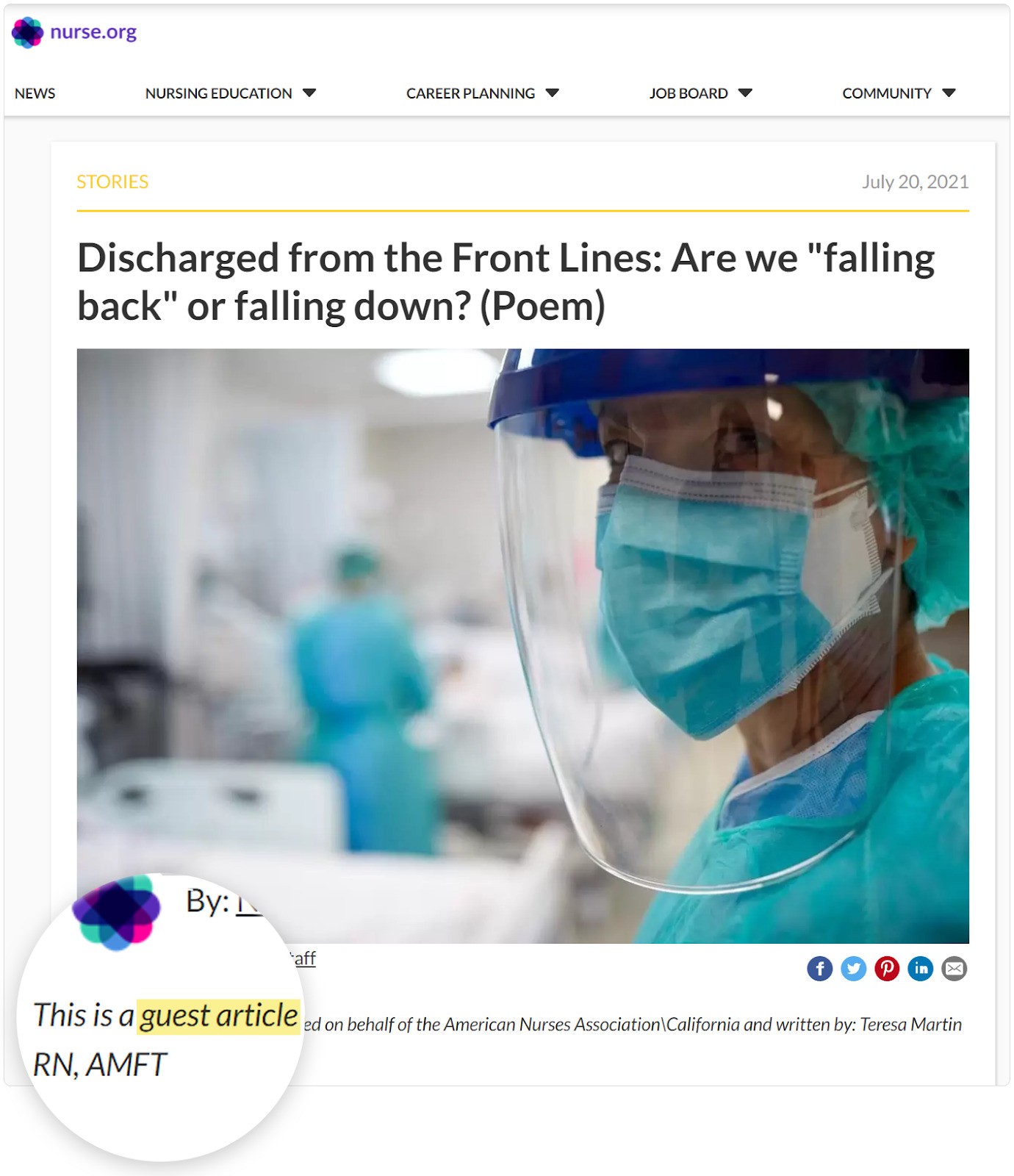
Whether you’re going to pitch articles for links or for the ability to get in front of somebody else’s audience, that’s entirely up to you. Guest blogging is good for both. However you want to approach it, just remember one thing: aim for high-quality websites.
Finding guest blogging opportunities can be as easy as plugging into Google “[your topic] ‘write for us’” or “[your topic] ‘guest post.’” But if you want to go pro and find these opportunities at scale (plus effectively filter them), see how we do it in this tutorial.
Here’s a great illustration of this tip. It’s called “Top 10 Facts About Pandas,” and it’s an article from WWF.
This is how it looks on the front side of things:
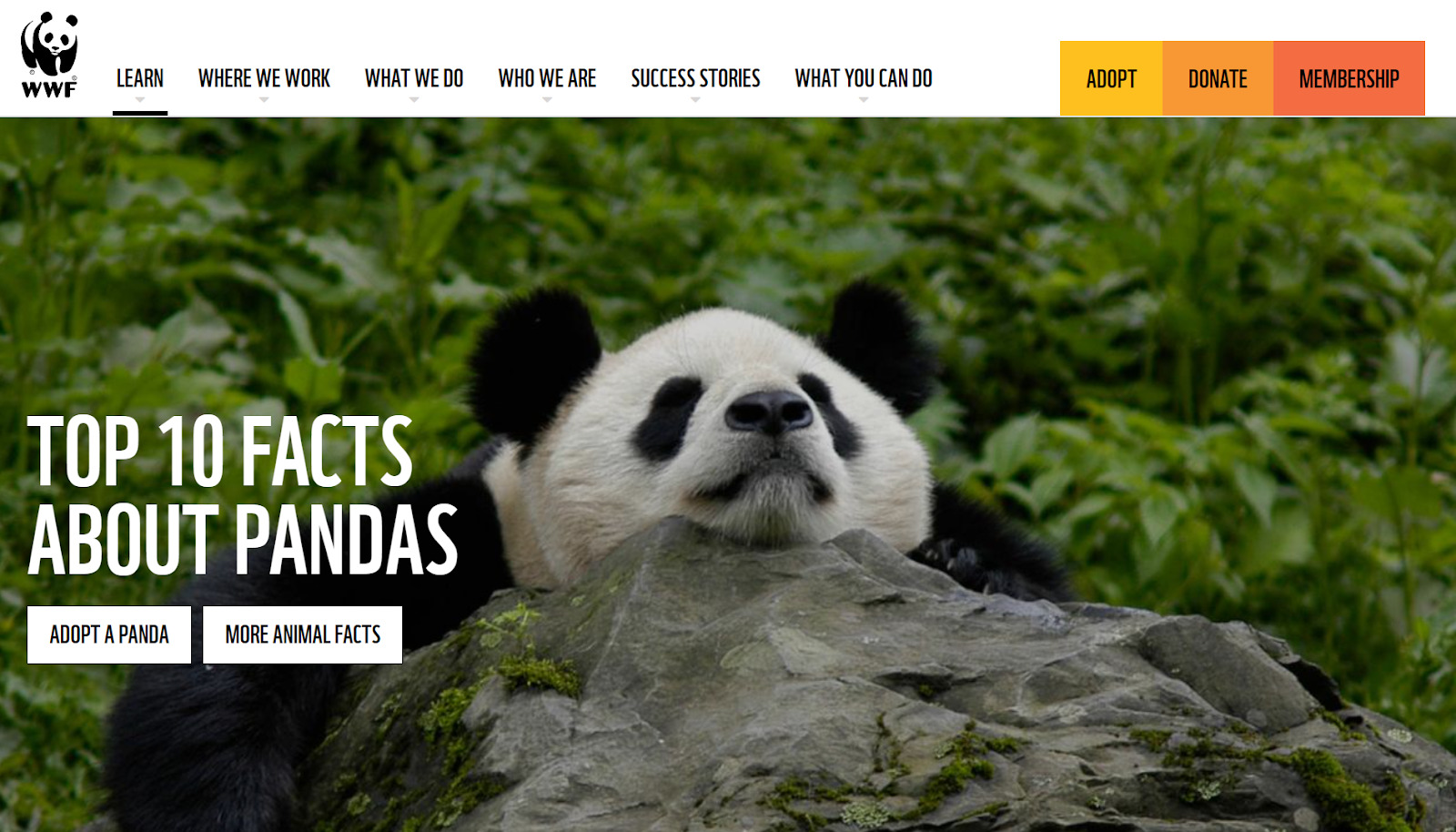
Ten interesting facts, 10 absolutely cute pictures, and a call to action: adopt a panda.
And here’s what’s happening under the hood—tons of organic traffic each month:
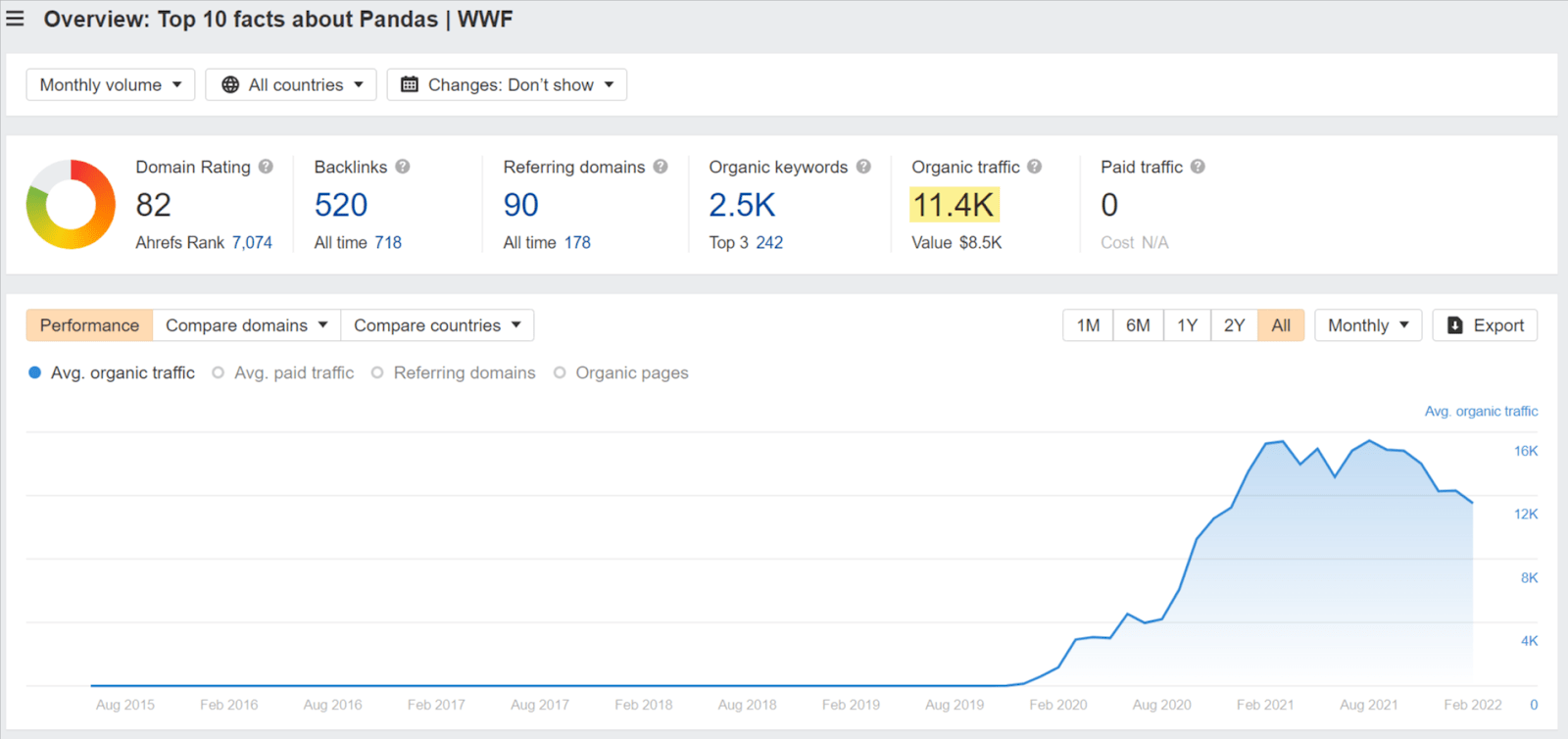
Data via Ahrefs’ Site Explorer.
With this article about pandas, WWF targeted an educational keyword to leverage the search potential of this topic—this is what drives all that organic traffic you see above. Notice the “call to action” button at the top? From 10 facts about pandas to adopting a panda, those are clever ways of increasing awareness about protecting this species.
And by the way, the other button leads to more pages like this. So what we can see here is not just a one-off SEO stunt. It’s an entire strategy.
A fair portion of educational keywords is written as questions, making the keywords easier to find. Google even suggests those in almost every search via the PAA box:

The “People also ask” box for the query “climate change.”
You can use a keyword tool to get those questions’ SEO metrics and browse them easily:

Data via Ahrefs’ keyword generator tool.
Statistical keywords imply the use of statistical data to best serve the intent behind the search.
Why should you go after these keywords? Two reasons. First, if there is search demand for them, they can generate organic traffic to your website and make more people aware of your cause. Secondly, they are great “link earners.”
For example, the keyword “human rights issues 2020” is something that is best answered by providing the actual statistics for this problem. And some nonprofits do that:

Data via Ahrefs’ free SERP checker.
Let’s take a closer look at the report ranking #1. This report from Human Rights Watch (one of the many reports in the series) generates over 2.5K monthly visits and about 2K backlinks.

Data via Ahrefs’ Site Explorer.
The slope of traffic you can see in the graph above is because the report already became outdated in Q1 of 2021.
This brings us to another point: The important thing to remember about content targeting statistical keywords (including reports) is to keep the content up to date.
Do a small test. Google “human rights issues 2020.” Then “human rights issues 2021.” Now compare the results. I think you will easily spot the same websites with the same kind of content that’s updated according to the year.
There are certain topics that are best covered by experts. It’s true in life and true in SEO too. We’re talking about the so-called YMYL (Your Money or Your Life) topics. According to Google’s Quality Raters Guidelines, these topics are:
- News and current events.
- Civics, government, and law.
- Finance.
- Shopping.
- Health and safety.
- Groups of people (information about or claims related to groups of people, including but not limited to those grouped on the basis of race or ethnic origin, religion, disability, age, nationality, veteran status, sexual orientation, gender, or gender identity).
- Other topics related to big decisions or important aspects of people’s lives that may be considered YMYL. These include fitness and nutrition, housing information, choosing a college, finding a job, etc.
If you’re creating informational or educational content related to one of these topics, you may want to consider demonstrating E-A-T to improve your rankings on SERPs.
E‑A‑T stands for expertise, authoritativeness, and trustworthiness. Same as YMYL, this concept comes from Google’s Search Quality Raters Guidelines, a document used by human quality raters to assess the quality of Google’s search results.
To put it simply, it’s best if that type of content is up to date, is accurate, quotes trustworthy sources, and is written or at least reviewed by an expert on the topic (and information on that expert is transparent and clearly displayed on the page).
To illustrate, here’s an example from Human Rights Watch. This is a news article about Afghan women’s rights activists:

When we click on the author’s bio, we can clearly see that the article was written by someone who is highly knowledgeable about the issue:

And here’s an example of how you can demonstrate E-A-T: having a reviewer assess your content. Notice that there’s also a date showing when the review took place:
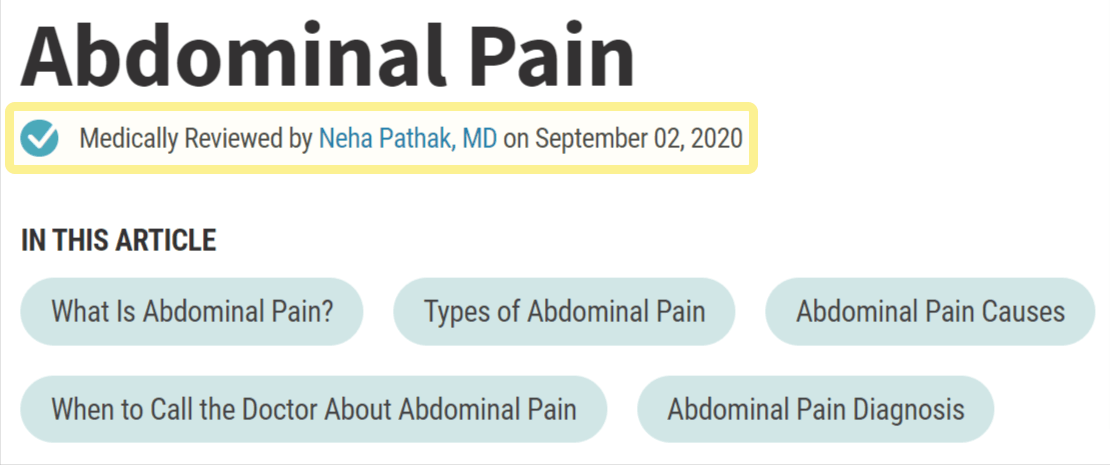
Recommended reading: What Is EAT? Why It’s Important for SEO
Global charities need global visibility. Organic traffic coming from multiple countries can greatly contribute to that goal. Hence, it’s important to implement some good practices of international SEO.
The first thing to note is that ranking high in one country doesn’t necessarily imply getting the same or even similar results in other countries. This is because Google localizes its search results based on the country and language of the query.
Let’s take a look at the results of translating Oxfam’s article about natural disasters. For the English version, the top five countries in terms of keywords and traffic are countries where search queries in English are native or very common:
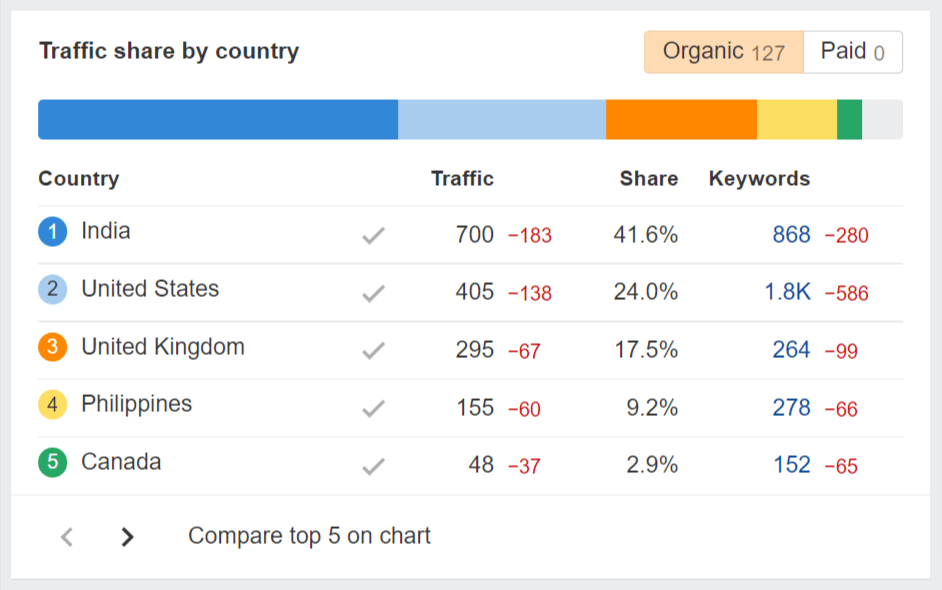
Data via Ahrefs’ Site Explorer.
And this is the same chart for the article’s Spanish version. We see Spanish-speaking countries dominating the top five.

At the same time, the United States, which ranks #2 for the English version, here ranks #10 with only 76 keywords (and all in Spanish).
Here’s another interesting fact. It will be easier to rank for keywords in some countries than in others. So if you think a keyword will be too hard to target in one language, try another language (provided your organization operates in those countries).
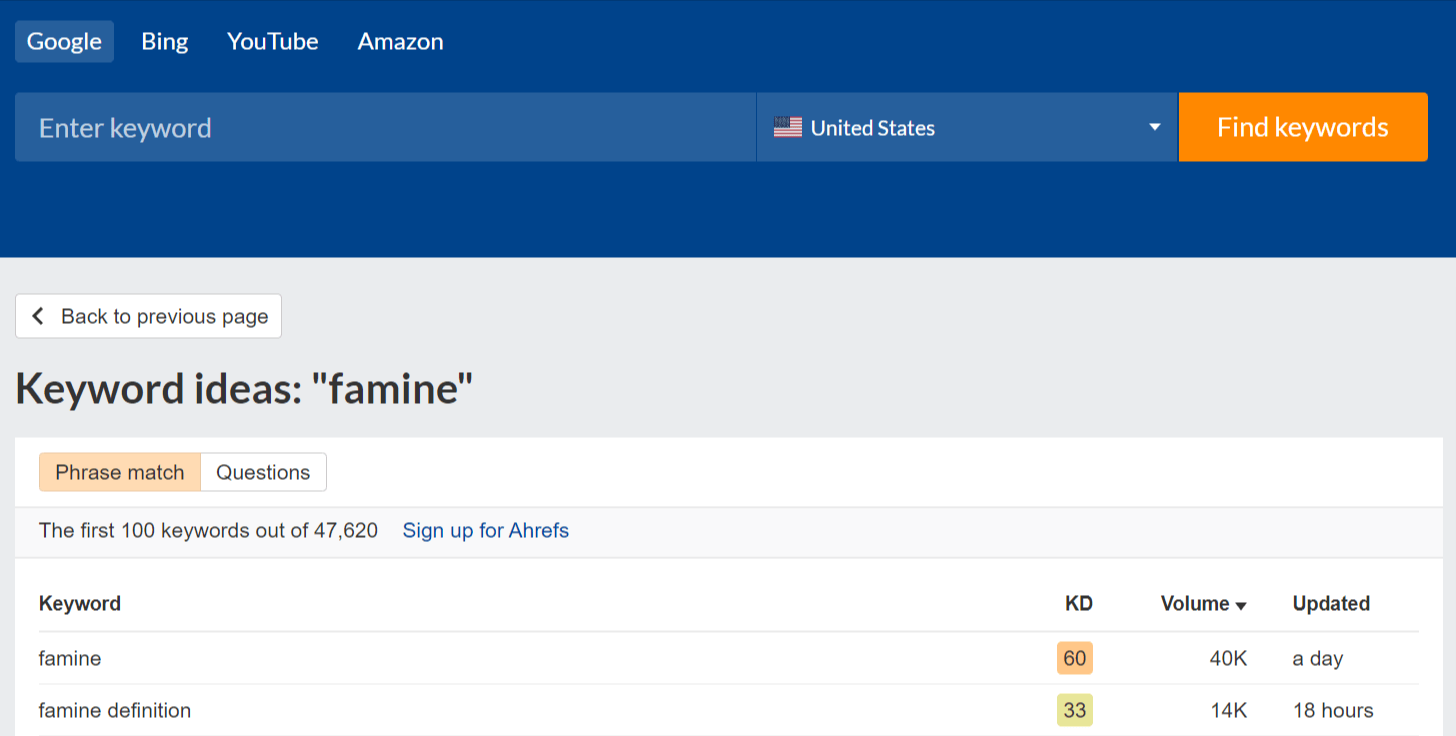
The word “famine” in the U.S. has a KD score of 60. This also means you’ll need backlinks from ~129 websites to rank in the top 10 for this keyword.

The word “famine” in France has a KD score of 3. We estimate that you’ll need backlinks from ~four websites to rank in the top 10 for this keyword.
Besides translating content, here are some things you can do to improve your international search rankings:
- Consider a localized URL structure and use a Content Delivery Network (CDN)
- Get links from local sources to your localized content
- Link to local sources from your localized content
- Keep in mind that Google isn’t the most popular search engine in some countries
You will find more details and tips for international SEO in our guides:
If you want to easily view depersonalized search results for different countries and different languages, try Ahrefs’ free SEO Toolbar.
Both locally operating nonprofits and global nonprofits can use local SEO to improve their rankings on search engines. Here’s how they can benefit from that.
When people look for your organization with a keyword containing a specific location, your organization’s branch can show up in the local map pack. Here’s an example for the query “unicef new york”:
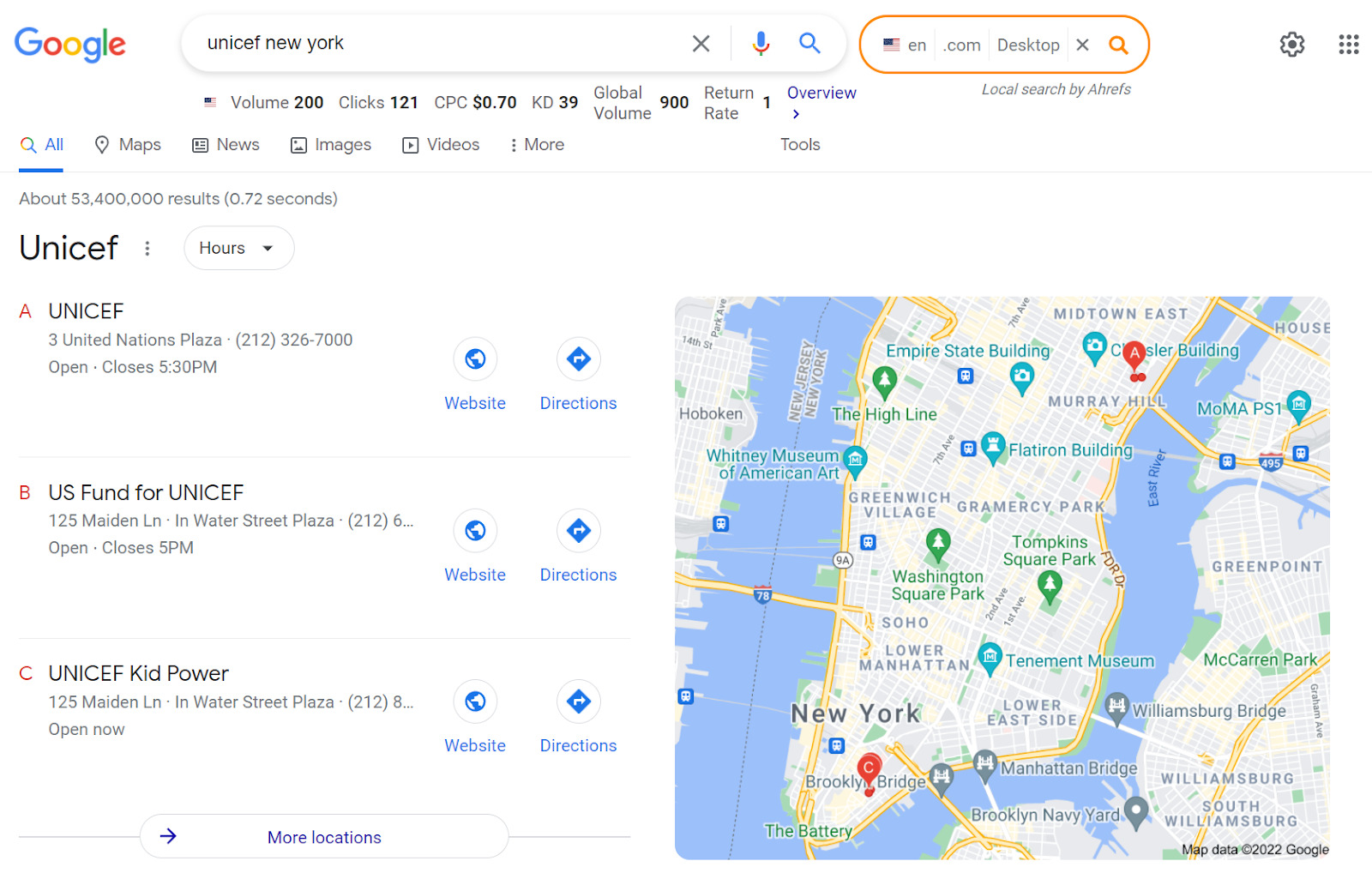
So a person searching for this query can use these results to easily locate UNICEF’s branches in this region. But since UNICEF also has a page with information for people interested in the organization’s work in this part of the U.S., searchers can also click on these results:

Another way local SEO helps to point people in your direction is search results personalized by location, e.g., “non profit organizations near me”:
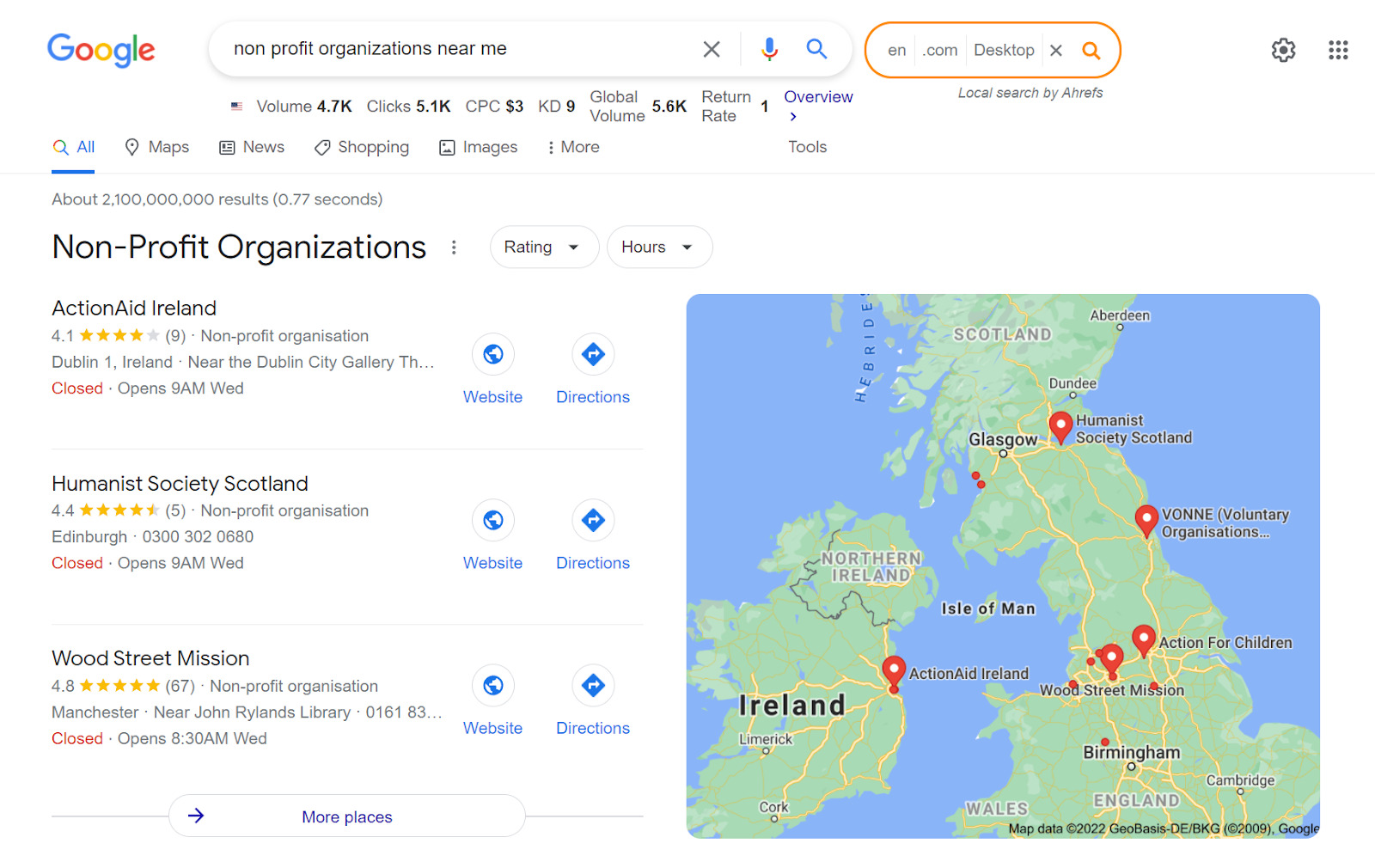
In this map pack, we have results that don’t show up on the first page of blue link search results. This means that by being featured in the map pack, these nonprofit organizations got a chance to jump over the other pages (no matter how well they were optimized for Google).
So if your organization has branches in different cities, here are the basic things you can do to leverage local SEO:
- Get a Google Business Profile and encourage some reviews of your local branches
- Create locally optimized landing pages
- Get links from local resources (and link to local resources too)
If you’d like to learn more on this topic, head over to our guides:
This is a Google Knowledge Panel:

You can find panels like this in many searches, not only for organizations or businesses. The knowledge panel is based on information in Google’s Knowledge Graph, a knowledge base of entities and the relationships between them. In this case, the entity is the nonprofit organization, Great Orchestra of Christmas Charity.
Knowledge panels matter for SEO (and for marketing in general) for a couple of reasons:
- Having a knowledge graph allows you to “own” more SERP real estate. As you can see, it’s really hard to overlook these panels; these panels give your organization’s brand more visibility.
- Aside from visibility, you can benefit from more credibility. If people want to look your organization up online because they want to volunteer or donate, having Google show this feature is almost like saying, “Yes, this organization is legit.”
Knowledge panels are something that nonprofits and charities should definitely go for. But I must warn you right away. Out of all the tips mentioned here, it’s probably the hardest thing to do. So to increase your chances, see this guide.
Branded search is any kind of query that contains words and phrases associated with your brand, products, or services.
Here is an example of a page that is partly optimized for branded search. If you Google the query “wwf logo” (the famous panda logo of WWF), you will find this page:
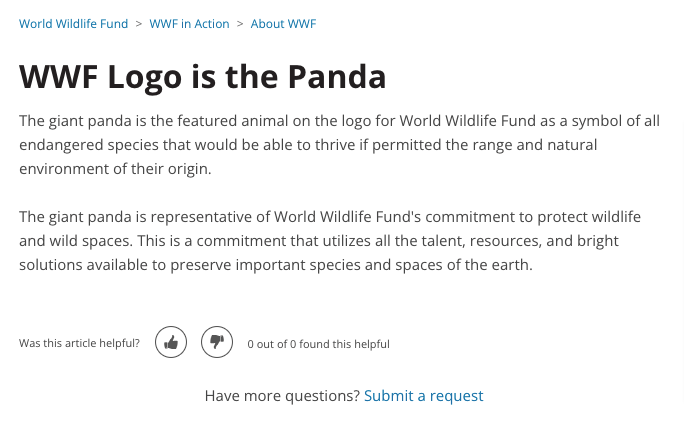
Notice anything strange here? Well, there’s no downloadable logo. If there was a logo on this page that visitors could use, they wouldn’t have to go back to the SERP and get the logo from another site. Wasted opportunity.
Why is this page only partly optimized for branded search? Because it ranks #1 for the query “wwf logo.” But it doesn’t fully serve the search intent behind the query, and that is to get a file with WWF’s logo.
The takeaway is quite simple here:
- Discover the branded keywords people look for to find information about your organization
- Create content that targets those keywords while serving the search intent
You can find your branded keywords using Ahrefs Webmaster Tools (or Google Search Console). Just open the Organic keywords report and filter the results using your organization’s name.
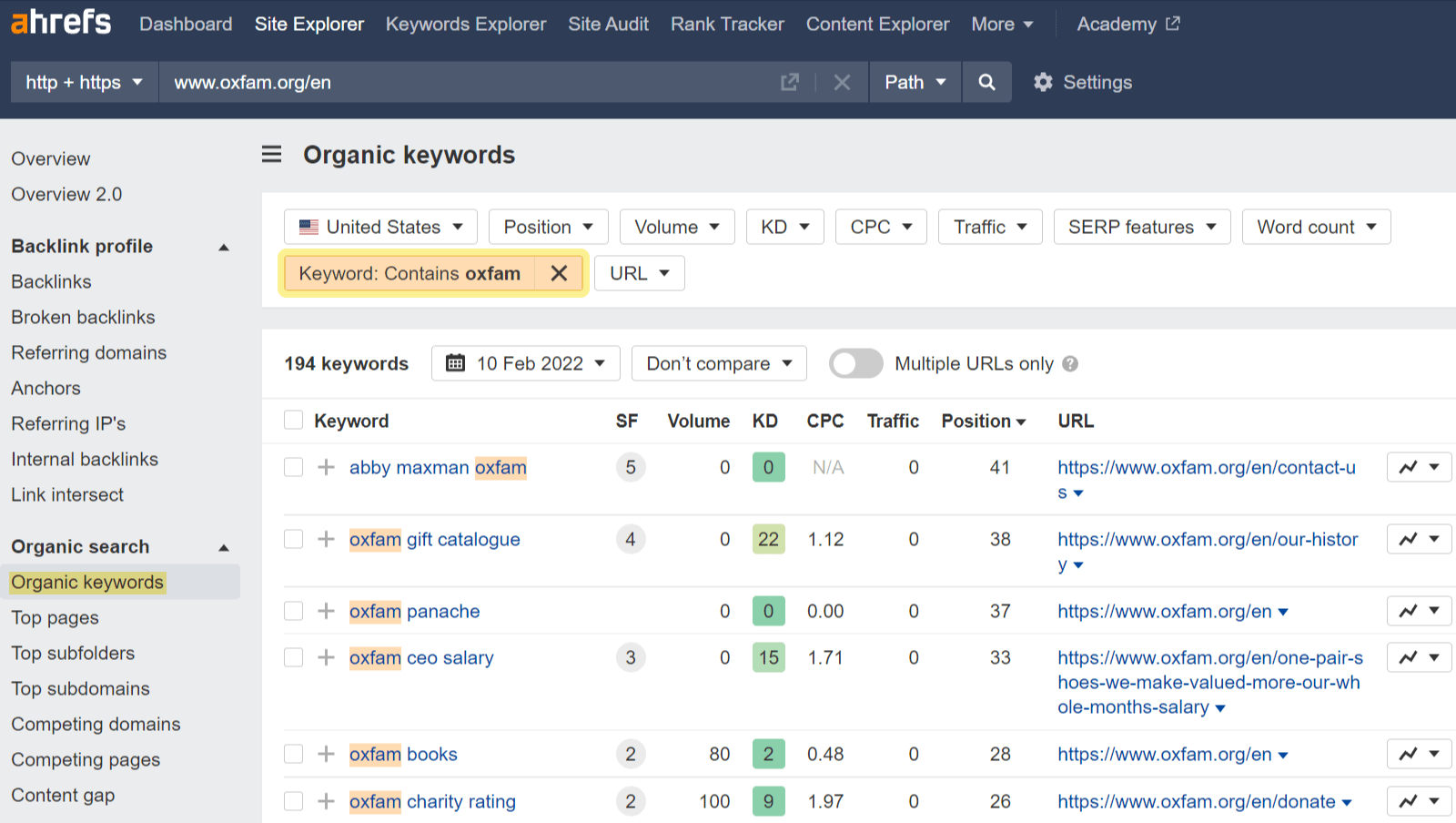
In extreme cases, you won’t rank for some of your branded keywords. To find such instances, you will need to use a keyword research tool, such as the ones I mentioned at the beginning of the article.
So let’s say you already have great content that attracts some high-quality links. As you should already know, those links definitely help that content rank higher on SERPs. But did you know those same links can help other pieces of content rank as well?
I’m talking about link equity, i.e., the “authority” that is passed when one page links to another.
You can pass link authority from one page to another if you link them, provided the links are relevant. These kinds of links are called internal links because they point to other pages in the same domain.
For example, here is an article from Oxfam about how the pandemic pushed more people into famine-like conditions. Notice how it links to a relevant report on the issue:

The best way to add relevant internal links is to do that as you write. You can just search through your existing content for articles that target certain keywords and link them to relevant (important!) articles. Or you can do it more strategically by designing a content hub.
But if you want to find relevant internal link opportunities to your existing content, you can automate the process using Ahrefs Webmaster Tools. Just sign up, crawl your site with Site Audit, and go to the Link opportunities report. This will show you relevant internal linking opportunities across your site.

Recommended reading: Internal Links for SEO: An Actionable Guide
Final thoughts
These 13 tips are by no means an SEO course. Nor are they a complete list of things nonprofits and charities can do for SEO. If you’re an SEO beginner or just want to revise your fundamentals, I highly recommend Ahrefs’ complete guide to SEO. I’m sure that you’ll come up with some more SEO ideas after reading it.
I’d like to conclude with a tip that is partly about SEO. If the competition on the SERPs gets too tough, nonprofits can use Google Ad Grants ($10K/mo) to jump over other search results.

On top of that, Google Ads is a tried and tested way to get backlinks for some types of content.
Got questions or comments? Ping me on Twitter.




